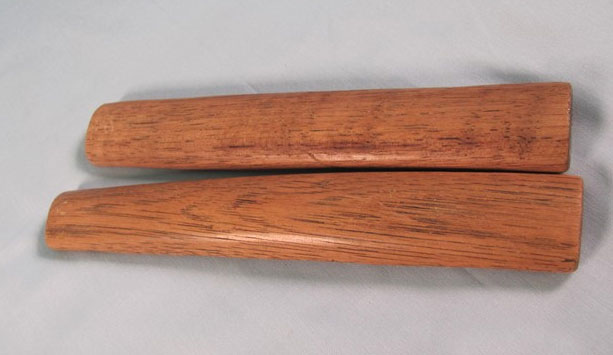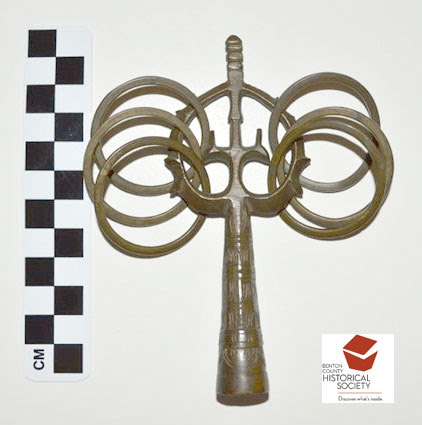Rug Beater

This object was used to beat the dust and dirt out of rugs, cushions, or bedding in the times before carpet sweepers or vacuum cleaners. By the 1840s mass production had made carpets and rugs cheap enough that many families could afford them. At the same time, the use of wood and coal for heating put out more dust and dirt which settled into the carpets or rugs. To remove dirt from the rugs, one took them outside, hung them over a line or railing, and whacked at them with the beater.
Rug beaters were often made of cane or rattan because the material was sturdy but flexible enough to provide a good whipping action.
A variety of patterns were used in the paddle portion. Some, like this one used a series of loops while others features a lattice pattern. The flat but resilient surface released dust without damaging the carpet or breaking from repeated impacts. Wire, another popular material, was formed into a simple teardrop shape, fashioned into a a heart shape, or bent into patterns similar to the rattan rug beaters. And some people just used simple wooden boards or paddles.
This particular rug beater was used in the early 20th century by Sade Chase Howland of Oregon City, Oregon. Even though by the 1950s rug beaters had been largely replaced by mechanical carpet sweepers and later electric vacuum cleaners, both wire and rattan rug beaters are still sold today.


